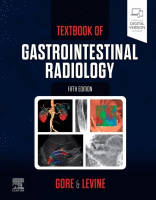Physical Address
304 North Cardinal St.
Dorchester Center, MA 02124

Abdominal wall disorders are frequently encountered in clinical practice, and may be associated with significant morbidity. Most abdominal wall or groin hernias can be easily diagnosed by inspection and palpation. In these cases, radiologic examinations are useful for preoperative demonstration…

Primary Neoplasms Primary tumors arising from the peritoneum are rare and are usually of mesenchymal origin. DESMOID TUMORS These tumors are related to benign but locally aggressive fibroblast proliferation or fibromatosis. The morbidity associated with these tumors is related to…

Introduction Ascites is the pathologic accumulation of fluid in the peritoneal cavity. It is a common finding that can be associated with a large number of diseases. Imaging plays an important role in detecting and characterizing ascites. Although ascites may…

Traditionally, the abdominal cavity has been divided into a number of peritoneal, retroperitoneal, and extraperitoneal spaces. Although it is useful for learning abdominal anatomy and appreciating the confinement of disease in a particular space, this classic approach affords limited understanding…

Splenic Trauma The spleen is the most commonly injured organ in blunt abdominal trauma. , It receives 5% of the cardiac output, accounts for 25% of the total reticuloendothelial cell mass, and plays a major role in clearing the plasma…

Although it is affected by many diseases, the spleen is not considered a great challenge to the radiologist. In daily practice, the size and shape of the spleen typically are subjectively evaluated, and if there is no obvious splenomegaly or…

Pancreatic Trauma Traumatic injury to the pancreas is rare and difficult to diagnose. The retroperitoneal location of the pancreas is a mixed anatomic blessing in patients with abdominal trauma. Its fixed position anterior to the vertebral column provides excellent protection…

Introduction Benign, borderline, and malignant neoplasms can arise from exocrine, endocrine, intraductal, and stromal elements within the pancreas. Additionally, secondary (metastatic) neoplasms and non-neoplastic tumor-like conditions (e.g., mass-forming chronic pancreatitis) can occur. The World Health Organization (WHO) recognizes over 50…

Pancreatitis is one of the most complex and clinically challenging of all abdominal disorders. It remains a major diagnostic challenge because its clinical manifestations are as protean as its causes. Indeed, only one in five severe cases of acute pancreatitis…

Hepatic Trauma CLASSIFICATION OF HEPATIC TRAUMA The management of hepatic trauma patients has evolved significantly during the last three decades and is now based on well-defined treatment algorithms. This has highlighted the need for an accurate classification system as a…